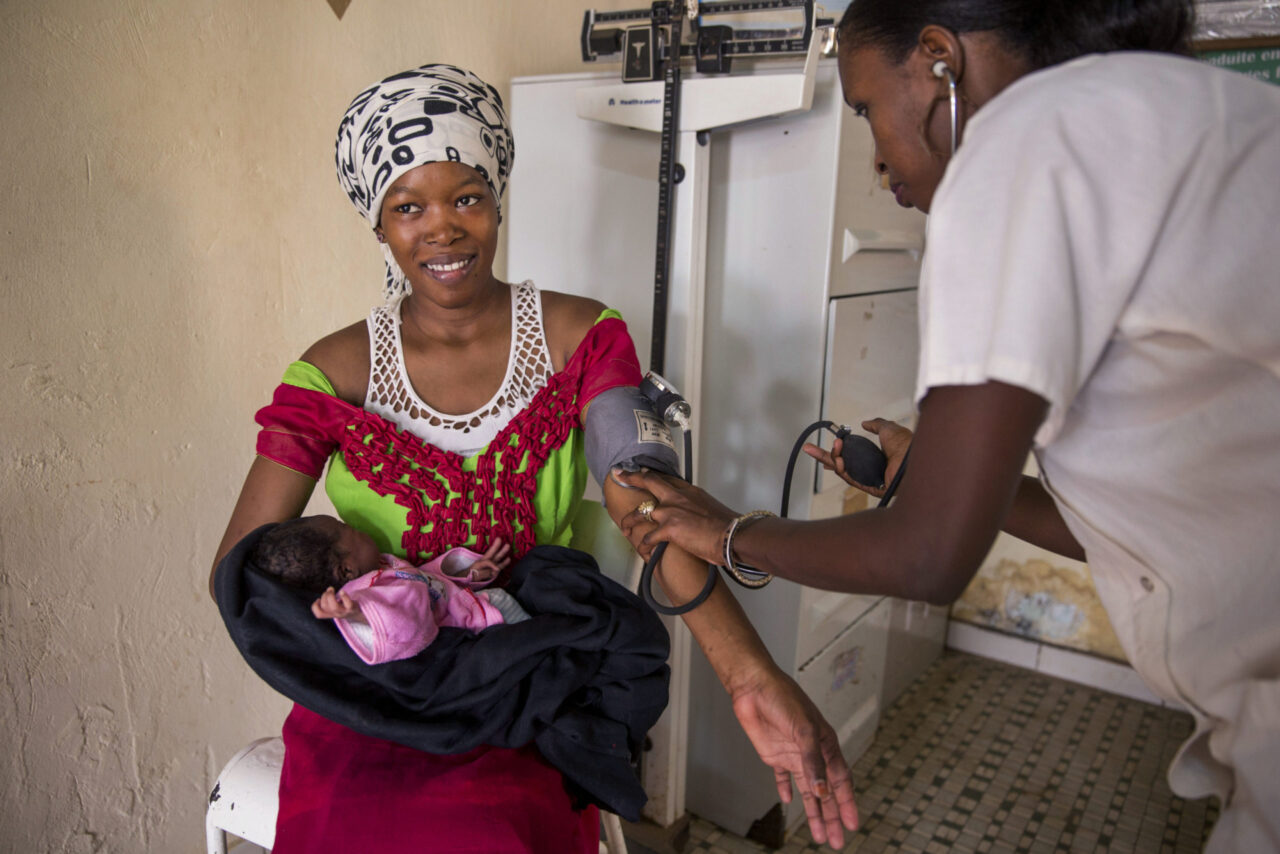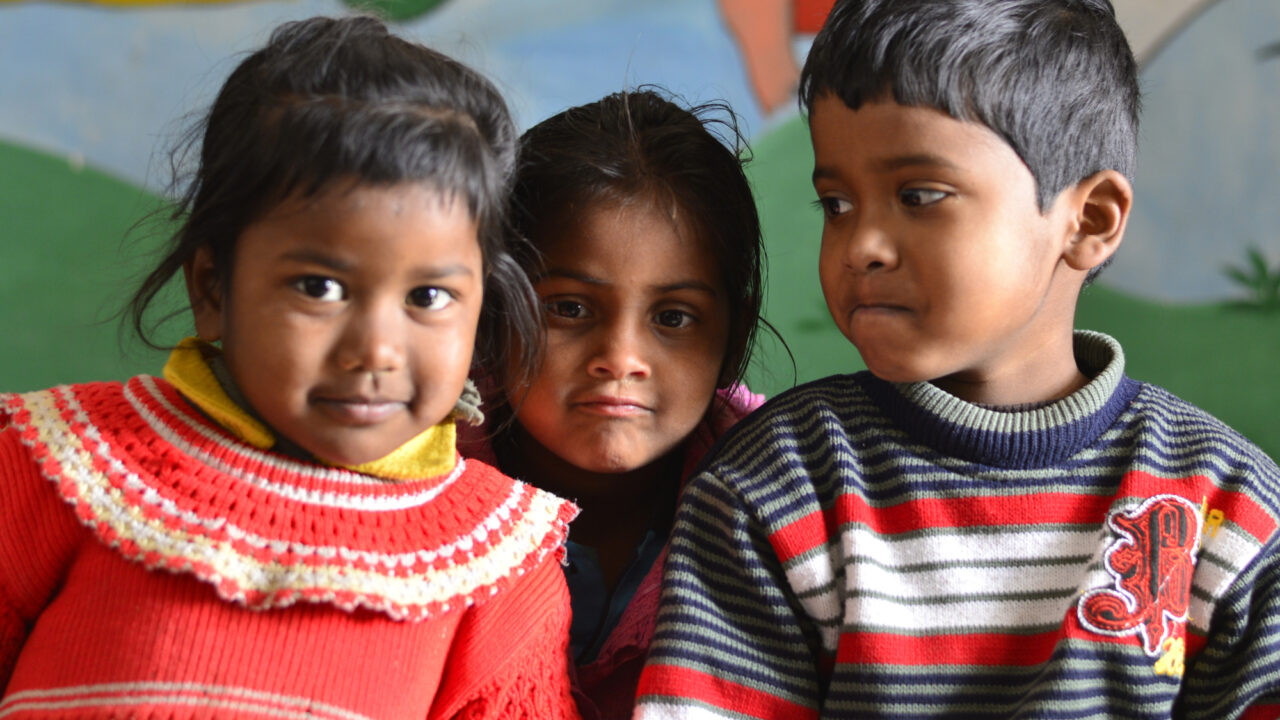Healthy beginnings, hopeful futures: WHO's 2025 call to action
This year's World Health Day theme —"Healthy beginnings, hopeful futures"— puts maternal and newborn health at the forefront of the global health agenda. As WHO calls for a "worldwide reinvigoration of efforts to ensure access to high quality care for women and babies," we face a sobering reality: despite knowing what works, critical implementation gaps prevent life-saving interventions from reaching mothers and babies who need them most.
The scale of missed opportunities
Maternal and newborn health faces some of the highest burdens globally, with devastating human costs:
- 300,000 women die annually due to pregnancy or childbirth complications
- 2 million babies die in their first month of life
- 2 million more are stillborn
This translates to approximately one preventable death every 7 seconds. Yet, key interventions remain underfunded and underdelivered. Alarmingly, the UN warned recently that progress in reducing child deaths and stillbirths are under threat amidst funding cuts and humanitarian crises. These gaps represent opportunities for what WHO calls "high-impact investments" — proven interventions with the potential to dramatically improve outcomes, but have yet to deliver on their promise. Here’s where the greatest opportunity for impact lies:
Syphilis testing and treatment during pregnancy: this inexpensive and highly effective intervention is theoretically simple – ensuring women get early screening and, if infected, treatment with a single shot of benzathine penicillin during pregnancy. However, with syphilis rates on the rise, the urgency has never been greater – surveillance data shows increases in both adult syphilis infections and congenital syphilis rates between 2016 and 2022. Without immediate action, more women and babies will suffer needlessly. Congenital syphilis remains the second leading cause of preventable stillbirth globally, preceded only by malaria – and surpassing that of HIV.
When a pregnant woman has syphilis – one of the most common sexually transmitted infections globally – she can transmit the infection to her unborn infant. This mother-to-child transmission, congenital syphilis, has severe consequences. In 2022 alone, WHO estimated 700,000 congenital syphilis cases and 390,000 adverse birth outcomes globally.
These adverse outcomes included:
-150,000 early fetal deaths and stillbirths
-70,000 neonatal deaths
-55,000 preterm or low-birth weight births
-115,000 infants with clinical diagnosis of congenital syphilis, who face health risks including rashes, organ inflammation, anemia, bone and joint problems, neurological conditions (such as blindness, deafness, meningitis), developmental delays, and seizures
Multiple micronutrient supplementation (MMS): an essential, low-cost solution commonly known as prenatal vitamins in wealthy countries. Despite clear evidence that maternal anemia and micronutrient deficiencies lead to poor pregnancy and birth outcomes, this intervention remains underutilized in the regions with the highest burden. Through our Equal Vitamin Access program, Evidence Action is working to close this critical gap by making MMS accessible to pregnant women who need it most.
Approximately 37% of pregnant women worldwide suffer from anemia, equivalent to about 32 million pregnant women globally. For every $1 invested in reducing anemia in women, an estimated $12 in economic returns could be produced.
Anemia prevalence among pregnant women exceeds 40% across much of Africa and South Asia, with some regions exceeding 50-60%.
Countries with high anemia rates among pregnant women often have correspondingly high under-five mortality rates.
As the global health community rallies around World Health Day, we must move beyond themes to focus our efforts – and resources – on measurable impact on the lives of the mothers and babies who need them most.
Addressing missed connections in prenatal care
Global prenatal (also known as antenatal) care attendance has increased in the last decade, but progress is uneven. Significant disparities persist across regions, urban/rural divides, and socioeconomic levels. Many women still face barriers to attending the recommended number of visits. Even when they do, gaps in essential supplies, services, and health system support often limit the quality and impact of care — leaving critical interventions out of reach.
1. Procurement and supply chain failures undermine delivery.
Weak systems prevent life-saving interventions from reaching those who need them most. Even when governments secure essential commodities — such as diagnostic tests or prenatal supplements — poor inventory tracking, frequent stockouts, and unreliable distribution disrupt availability.
For example, in Liberia, syphilis tests and treatments were included in national guidelines but remained inconsistently available at health facilities. Evidence Action’s Syphilis-Free Start program collaborated closely with the National AIDS and STI Control Program of the Ministry of Health to strengthen the distribution systems, ensuring that dual HIV/syphilis tests and penicillin were more consistently stocked at 566 health facilities which provide antenatal care across the country. Our efforts included strengthening national forecasting, improving inventory management, enhancing distribution strategies, and increasing advocacy to key funders for support. By strengthening the linkage between policy and practice, our technical support has enabled astounding gains: in 2024, 91% of facilities had benzathine penicillin in stock and 98% had dual tests in stock. By leveraging HIV testing infrastructure to integrate syphilis screening and treatment, we oversaw a nationwide scale-up of dual tests in just two and a half years.
Similarly, in Nigeria, our pilot research on MMS identified critical gaps in supply chain systems, such as inconsistencies in the availability of iron and folic acid formulations and overly complex ordering and reporting processes. These gaps often mirror broader challenges, such as poor inventory management, inadequate infrastructure, and financial constraints among others, which often result in stockouts of essential medicines. To address these challenges and ensure reliable supplement availability, Evidence Action is focusing on supporting and strengthening health authorities by streamlining ordering processes, simplifying data entry, and implementing real-time stock monitoring systems. This support focuses on improving inventory tracking, enhancing accurate quantification and reporting practices, and reinforcing standardized ordering and quantification protocols to optimize vitamin access.
Effective implementation requires strengthening procurement systems and supply chains for critical commodities. Integrating new interventions into existing frameworks and workflows can help ensure reliable delivery of essential supplies and overcome implementation barriers.
2. Health worker capacity is a critical barrier.
The WHO underscores the essential role of midwives and skilled birth attendants, but these providers cannot deliver quality care without strong systems behind them. Inadequate training, inefficient clinical workflows, and lack of mentorship all hinder their ability to provide comprehensive care.
Successful programs focus on training, supervision, and workflow optimization to help providers deliver consistent, high-quality care. Evidence Action is testing approaches to overcoming MMS barriers while reducing burdens on frontline workers. One promising strategy involves providing women with full courses of MMS upfront during initial visits, ensuring that women who are unable to attend follow-up visits receive the full number of MMS tablets they need. By reducing dependence on frequent follow-up visits, providers can focus their limited time on delivering quality counseling rather than managing repeat distributions.
We are also integrating findings on effective counseling practices into training materials. These include equipping providers with skills to help patients set up phone reminders for daily supplement intake and utilizing visual aids like counseling flip charts to improve patient understanding and adherence. Health workers receive practical tools to address common barriers their patients face, such as forgetfulness or misconceptions about supplements. These adaptations recognize the realities of healthcare access in low-resource settings and provide practical solutions that support health workers in delivering care.
In countries where Syphilis-Free Start operates, gaps in healthcare provider knowledge have been a key barrier to implementation. To address this, Evidence Action has supported governments in launching nationwide training-of-trainers programs, developing curriculum, job aids, and other provider tools. In Liberia, the program has reached nearly every facility in the country and delivered on-the-job training to 4,820 frontline health providers. This training included hands-on workshops and ongoing supervision, which have significantly improved the quality of services. As a result, 94% of healthcare providers in Liberia now report knowledge of the correct treatment protocol for syphilis, and 100% know the screening guidelines.
3. Weak monitoring systems obscure gaps.
Maternal health programs often lack real-time data tracking, making it difficult to understand performance and address failures. Without rigorous data and quality assurance mechanisms, stock shortages, provider knowledge gaps, and service inconsistencies go unaddressed. Programs struggle to identify and resolve bottlenecks, weakening their overall impact.
Rather than creating parallel reporting structures, the Syphilis-Free Start program has worked to integrate key monitoring indicators into existing government tools and systems. In Liberia, annual health facility surveys helped identify key gaps, including the vulnerabilities of the national supply chain, where more facilities than expected were found to be stocked out of dual tests and penicillin in 2023. In response, we partnered with the Ministry of Health to prioritize supply chain improvements and incorporate regular feedback loops between county health teams and health facilities. As a result, we are seeing more consistent availability of essential commodities. These insights are integral to refining our approach and ensuring continuous improvement in service delivery, which governments can sustain in the long term. We also worked to strengthen health facility reporting systems and data tracking, integrating syphilis-related indicators into routine government monitoring, which enhanced the overall quality of data used to inform program decisions.
In Nigeria, Evidence Action found significant gaps in tracking anemia screening and treatment in facilities we surveyed. Among facilities with low screening rates, weak data reporting practices were identified as a key challenge. Poor reporting on screening made it difficult to determine which pregnant women required anemia treatment, and there was also no way to determine whether pregnant women were receiving the appropriate dosing of iron supplementation based on their anemia status. To improve accountability, we are tracking a more comprehensive set of indicators in facility registers through our MMS pilot and reinforcing the need to record this data accurately through monitoring of data capture on anemia status, supplement distribution and adherence, and stock availability. Strengthening facility-level reporting mechanisms can help identify gaps and optimize maternal health outcomes.
Real-time feedback loops and quality assurance mechanisms enable continuous program improvement. By collecting and analyzing data on key performance indicators, program managers and health officials can identify and resolve implementation barriers promptly. This data-driven approach transforms maternal health services from merely available to consistently effective.
Building systems that deliver on promises
As WHO emphasizes, "In low- and middle-income countries, every US$ 1 invested in maternal and newborn health is estimated to yield around US$ 9 to US$ 20 in return." But these returns only materialize when investments translate into actual service delivery improvements.
Too often, life-saving solutions are thwarted by implementation breakdowns: supply chains that fail to deliver essential commodities, health workers lacking the training and support to provide quality care, and health systems unable to monitor and improve their own performance. This is evident in the persistent burden of maternal anemia, the tragedy of preventable congenital syphilis, and the missed opportunities within antenatal care.
Addressing these challenges requires evidence-backed, cost-effective approaches tailored to the most challenging settings. Evidence Action works directly with governments to strengthen public health systems, integrate solutions into existing frameworks, and ensure effective delivery. Establishing real-time feedback loops, adapting programs to local contexts, and prioritizing cost-effectiveness helps ensure that resources are used efficiently and that maternal and newborn health programs deliver on their full potential.
By closing these implementation gaps, maternal health interventions can reduce preventable deaths and improve outcomes where the need is greatest. The mothers and babies who are counting on us deserve nothing less than to see the promise of ‘healthy beginnings, hopeful futures’ fulfilled through not just ambitious targets, but effective delivery systems that make those rights a reality.



